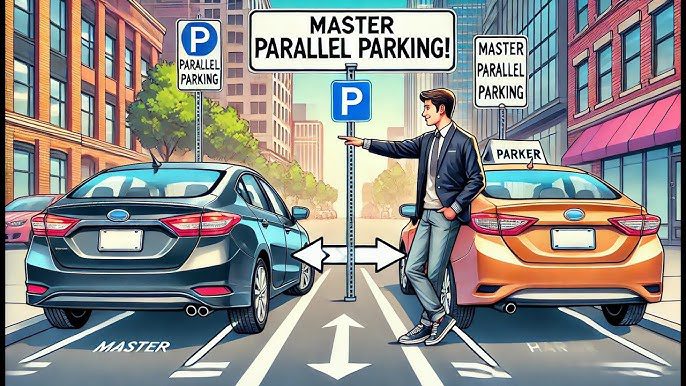Do your hands sweat just thinking about parallel parking? You’re not alone. Many new (and even experienced) drivers feel anxious when it comes to squeezing a car between two vehicles without a scratch.
But here’s the good news: parallel parking isn’t rocket science—it’s just a smart skill that requires the right technique, a little patience, and regular practice.
In this guide, you’ll learn everything you need to know about how to parallel park like a pro.
What is Parallel Parking?
Parallel parking means parking your vehicle in line with other parked cars, usually on the side of the road, facing the direction of traffic. It’s most often used in urban areas where parking space is tight.
The technique involves pulling up beside a parked car, reversing at the right angle, and adjusting your position to fit neatly between two vehicles—without bumping anyone.
Step-by-Step Guide to Parallel Parking
Parallel parking might look intimidating, but by breaking it into steps, it becomes much easier to understand—and do!
Step 1: Find the Right Spot
Don’t rush into the first open space you see. Make sure the spot is at least 1.5 times the length of your car. Pull up next to the car you plan to park behind, keeping a distance of about 2 to 3 feet between your vehicle and theirs.
Step 2: Start Reversing
Shift into reverse and back up slowly until the middle of your car aligns with the rear bumper of the parked vehicle next to you. This sets you up for a smooth entry into the space.
Step 3: Turn into Position
Turn the steering wheel fully towards the parking spot and continue reversing. Once the front of your car clears the back bumper of the front vehicle, start straightening the wheel and back into the space.
Step 4: Straighten Up
As your car fits into the parking space, straighten the steering wheel and center your car between the vehicles in front and behind. Your car should be parallel to the curb or divider.
Note: If parking on the left side of the road, the same method applies—just mirror your steering and positioning.
5 Practical Tips for Perfect Parallel Parking
Want to parallel park without stress or struggle? Keep these essential tips in mind:
1. Use Your Indicators
Always turn on your left or right turn signal before starting to parallel park. This alerts other drivers about your intention and helps prevent confusion.
2. Check Your Mirrors
Use your IRVM (inside rearview mirror) and ORVMs (side mirrors) to monitor blind spots and avoid obstacles. This ensures full visibility while reversing.
3. Go Slow and Steady
Never rush parallel parking. Move your car slowly and smoothly, giving yourself time to make precise adjustments.
4. Maintain Steering Control
Keep both hands on the wheel in the 9 and 3 o’clock position. Avoid oversteering, and make smooth, controlled turns to guide your car into place.
5. Leave Enough Space
While parking close to the curb or divider, ensure there’s enough space in front and behind for other cars to move. Also, make sure you and your passengers can safely open the doors.
Final Thoughts
Parallel parking may seem challenging at first, but with the right steps and regular practice, it becomes second nature. Remember, staying calm, taking your time, and using your mirrors wisely are key.
Tip for Learners:
If you’re still struggling, professional driving lessons can give you the hands-on experience needed to gain confidence and skill in tight-space parking.







